Hunting Down Good Coffee At The Tokyo Coffee Festival
 Last weekend I had the pleasure of visiting the The Tokyo Coffee Festival at the Farmers’ Market on the grounds of the United Nations University in Shibuya. My mission was to find, sample and buy some great coffee for my members and visitors at Ginza Hub, and to maybe even set up coffee partner to keep good beans flowing to our co-working space long after the festival was over.
Last weekend I had the pleasure of visiting the The Tokyo Coffee Festival at the Farmers’ Market on the grounds of the United Nations University in Shibuya. My mission was to find, sample and buy some great coffee for my members and visitors at Ginza Hub, and to maybe even set up coffee partner to keep good beans flowing to our co-working space long after the festival was over.
But first of all, was it absolutely necessary to walk around a crowded event, tripping over people, just as they tripped over my rolling carry bag, fighting my way from stall to busy stall?
Hell no.
 But I am a certified barista and I am Australian and I do love real coffee (not that swill they serve at fast food outlets) so it was definitely worth my while.
But I am a certified barista and I am Australian and I do love real coffee (not that swill they serve at fast food outlets) so it was definitely worth my while.
Be sure to read the 7 reasons why coffee is good for you over on our sister site, HealthfulHub.net, to get a better education about this incredible beverage.
Anyway, off I went on my Hunt Down Good Coffee mission!
The first stall I stopped at was Cafe LuLu from Taiwan. There they crafted a very nice cup of drip coffee for me, and the lady I spoke to went to great lengths to describe the coffee and the origins of the cafe. It was all very nice…
 But the coffee itself just seemed a bit… weak, and I knew that some of my die-hard double-shot espresso loving members at Ginza Hub wouldn’t really be impressed, so I moved on…
But the coffee itself just seemed a bit… weak, and I knew that some of my die-hard double-shot espresso loving members at Ginza Hub wouldn’t really be impressed, so I moved on…
I downed my cup of LuLu Cafe coffee pretty quickly (to get in the mood, you see) then bought a 5-pack of little sample cups so that I didn’t have to stand there and drink a full cup of coffee at each tasting. It was actually a good system and allowed people to sample a lot of different coffees without getting over-caffeinated (although some people clearly were.)
Anyway, the next stall I stopped at was called Yeti Fazenda Coffee from Shiga Prefecture. It was staffed by a few young Japanese guys who really seemed to love their work, gesturing and bantering and tossing stuff about.
 So I asked them to hit me up with a sample of their best beans and bam! Found one! The beans were from Brazil, and created a strong but not overpowering taste that I really liked.
So I asked them to hit me up with a sample of their best beans and bam! Found one! The beans were from Brazil, and created a strong but not overpowering taste that I really liked.
Nice one, Yetis!
So I bought two 200 gram bags and a post card with their contact details on it so that I could contact them about a regular supply should our members at Ginza Hub deem them worthy of our patronage.
They were definitely a contender though, even though they were only the second suppliers I’d sampled.
Next I stopped by the stall of Vietnamese coffee maker Banh Mi, which was a little blue truck of some kind. Not because I was particularly interested in that style of coffee but because the young Vietnamese guy hawking customers loudly outside pretty much dragged me over!
For those who don’t know, Vietnamese coffee is (at least in Australia where we have a large and vibrant Vietnamese community) usually made with milk and sugar, which is not my cup of tea, so to speak.
But the young man was adamant that I hadn’t tasted real Vietnamese coffee until I’d tasted his Vietnamese coffee, so I took a sample and gave it a try… It was god awful… So sugary sweet!
It must have showed on my face because just then a guy at the same stall popped his head out of the truck and told me that I should try the same coffee without milk. I said no thanks, but he insisted, in perfect English! Apparently he was Vietnamese-American and from Seattle. He was super nice, and told me about a “pop-up” cafe that they’d be showcasing in various parts of Tokyo to promote their special coffee.
I took a few swigs of their chocolatey, non-milk-but-still-pretty-sugary coffee, then smiled and bid them farewell.
Next I sampled a blend of beans from Kenya, Guatemala and El Salvador by Rokumei Coffee of Nara Prefecture. I usually go for pure, single-bean coffees instead of blends, but Nara is my most favourite place in Japan, so I gave their coffee a try and it was actually very nice. I grabbed a couple of 250 gram bags, and their business card, and moved on.
 I then stumbled upon Single Origin Roasters from Sydney!
I then stumbled upon Single Origin Roasters from Sydney!
As I mentioned earlier, Aussies love great coffee, so I thought I’d better give these guys a try.
A nice Japanese lass with a strong Aussie accent explained the 3 types of beans they were selling, and was very excited to tell me that they’d be opening a hip cafe in Tokyo very soon. And as an Australian, I had to go there!
I sampled their Sumatran coffee and was suitably impressed with the strong, almost herbal taste.
 I was equally impressed with the packaging which clearly spelled out the taste qualities and the roasting details in both English and Japanese and proclaimed, “Hands down, this is the most delicious Sumatran coffee we’ve ever tasted… Teamed with a unique drying method & expert processing, this coffee is the goods all the way!”
I was equally impressed with the packaging which clearly spelled out the taste qualities and the roasting details in both English and Japanese and proclaimed, “Hands down, this is the most delicious Sumatran coffee we’ve ever tasted… Teamed with a unique drying method & expert processing, this coffee is the goods all the way!”
How could I refuse! I grabbed two 250 gram bags and was one happy camper!
In spite of all the caffeination, I was starting to get tired of walking through the growing crowd, so I thought I’d visit one more coffee stall and then call it a day.
 Near the Australian coffee stall I just visited was another cool one with this groovy looking bald Japanese dude in a purple bandanna and beard. So I thought ok, let’s give him shot (no pun intended) at the title.
Near the Australian coffee stall I just visited was another cool one with this groovy looking bald Japanese dude in a purple bandanna and beard. So I thought ok, let’s give him shot (no pun intended) at the title.
His company was selling Ethiopian coffee and also Kenyan coffee, so I asked for a sample of each one to compare.
The Ethiopian coffee was quite strange, with overtones of fruit and berries, so I didn’t finish it. Not nice at all, though not indicative of other, richer Ethiopian coffee I’ve had in the past. But the Kenyan coffee, although still a bit light and fruity, wasn’t bad at all. The purple bandanna dude was very talkative and really appreciative of my feedback, so I bough a couple of bags of the Kenyan variety and went in my way.
And that pretty much completed my Hunt Down Good Coffee mission.
 Back at Ginza Hub the following week, I set up each of our two Italian espresso machines with different beans and asked our members to rate each type of coffee on a scale of 1 to 5 stars, with 5 stars being awesome.
Back at Ginza Hub the following week, I set up each of our two Italian espresso machines with different beans and asked our members to rate each type of coffee on a scale of 1 to 5 stars, with 5 stars being awesome.
So far, the Brazilian coffee is winning with an average of 4 stars, with the Kenyan coffee coming next and the Sumatran coffee in last place.
We are yet to try the blend of Kenyan, Guatemala and El Salvador beans by Rokumei Coffee from Nara Prefecture, but it looks like the Yeti boys’ Brazilian coffee might just be the winner. If so, I’ll call them and set up a stream of delicious coffee beans delivered from their roasting factory in Shiga right into Ginza Hub.
So, if you haven’t already, why don’t you stop by Ginza Hub for one of our tasty, professionally made coffees and then give us a star rating over on ! 😉
A big shout out to TopTia Photography for taking these awesome photos! Thanks, Tia!


 Last week I had the pleasure of mentoring a group of switched on young international business students from Monash University Malaysia, a branch campus of the Australian Monash University, right here at Ginza Hub. They were travelling to Vietnam and Japan to learn about local business environments, to visit various companies and their representatives, and to cover different areas of business from HR to franchising to manufacturing.
Last week I had the pleasure of mentoring a group of switched on young international business students from Monash University Malaysia, a branch campus of the Australian Monash University, right here at Ginza Hub. They were travelling to Vietnam and Japan to learn about local business environments, to visit various companies and their representatives, and to cover different areas of business from HR to franchising to manufacturing. I was given the topic of “local management style and its applicability in foreign ventures” so I laid the setting by welcoming everyone to Ginza Hub, Tokyo’s only
I was given the topic of “local management style and its applicability in foreign ventures” so I laid the setting by welcoming everyone to Ginza Hub, Tokyo’s only 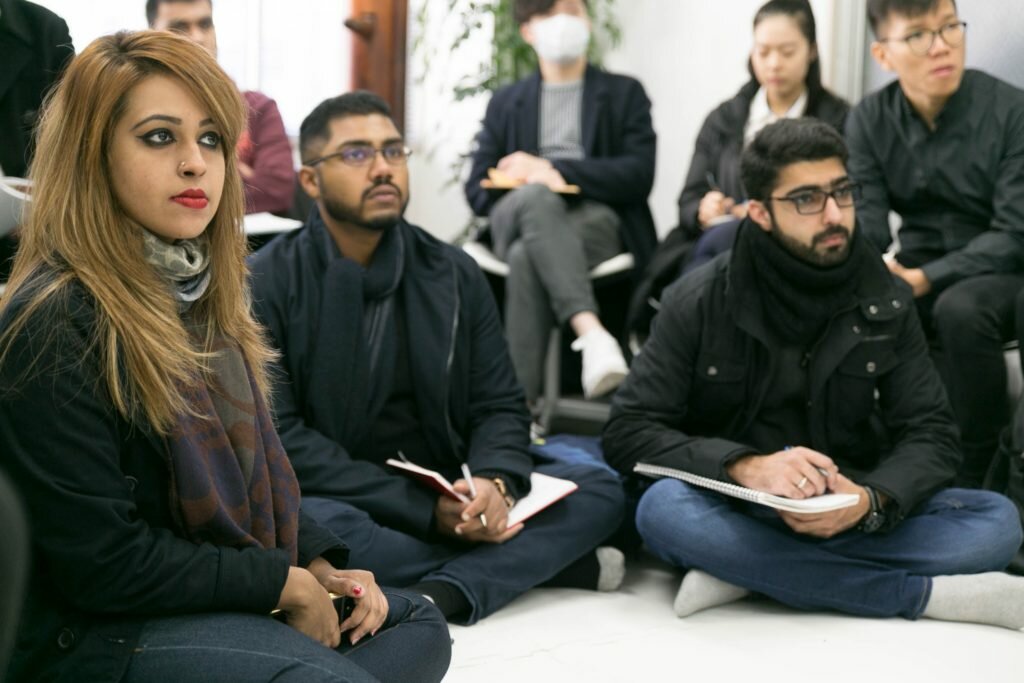 The students were clearly familiar with these two business models, judging by the looks on their faces, so I quickly moved on to the next phase.
The students were clearly familiar with these two business models, judging by the looks on their faces, so I quickly moved on to the next phase. I told the students not to simply take my word for it that the Lean Startup Model really worked, but to take it from a young entrepreneur, who’s startup wasn’t even a year old, but who was amazingly just about to hit her first big revenue target. Enter Ginza Hub expert and superstar photographer, the lovely
I told the students not to simply take my word for it that the Lean Startup Model really worked, but to take it from a young entrepreneur, who’s startup wasn’t even a year old, but who was amazingly just about to hit her first big revenue target. Enter Ginza Hub expert and superstar photographer, the lovely 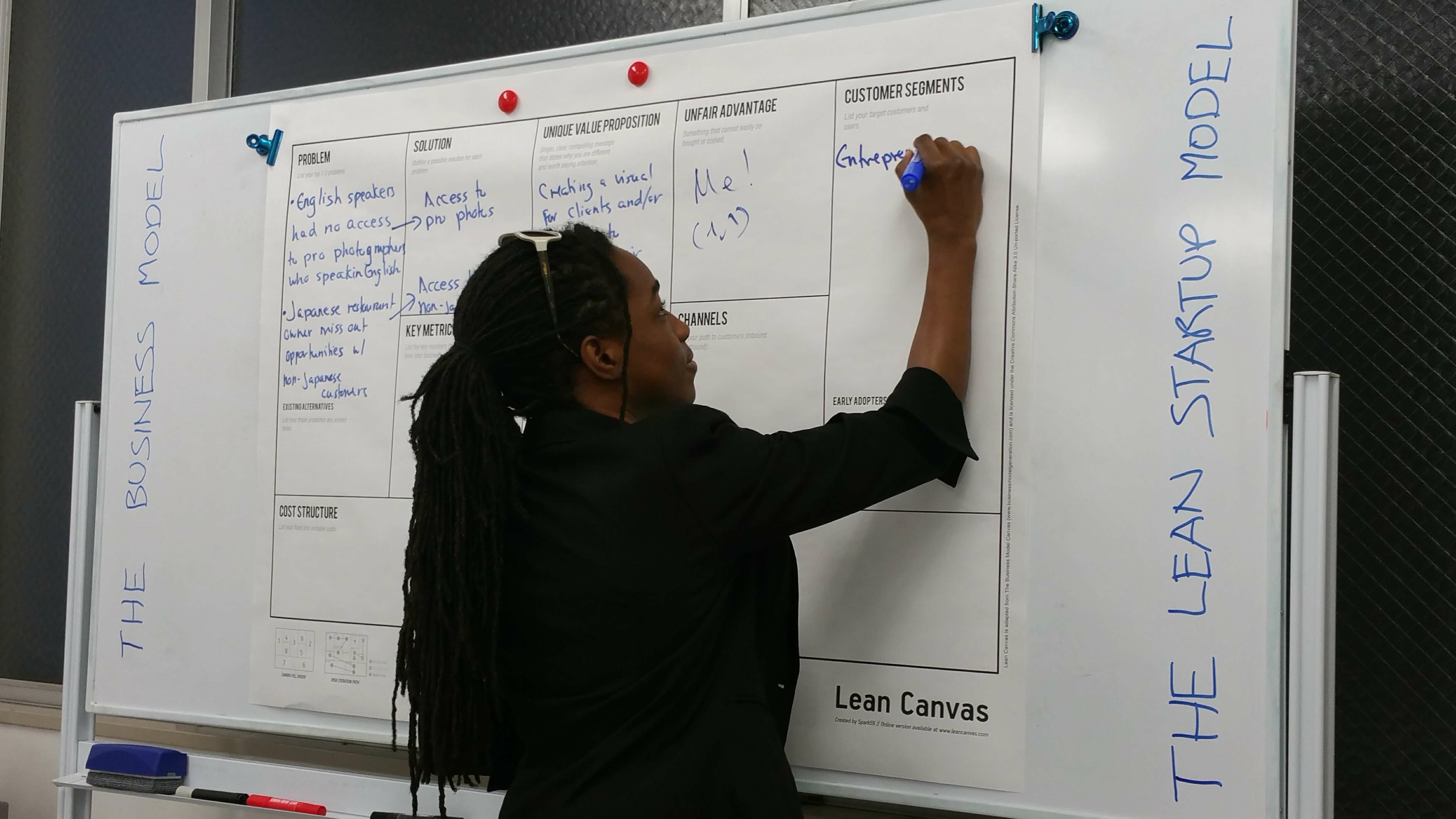
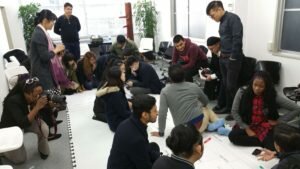 Each team then selected a presenter or two to get up and pitch their startup idea to the entire crowd. We then voted for the best startup, which ended up being an offline phone application showing maps and places of interest in the Malaysian capital to help foreign tourists navigate that fair city without any phone network or WiFi access. Brilliant!
Each team then selected a presenter or two to get up and pitch their startup idea to the entire crowd. We then voted for the best startup, which ended up being an offline phone application showing maps and places of interest in the Malaysian capital to help foreign tourists navigate that fair city without any phone network or WiFi access. Brilliant! Once all the chatting and laughing had died down, I concluded the presentation with the resolution and, of course, the point!
Once all the chatting and laughing had died down, I concluded the presentation with the resolution and, of course, the point! After an intelligent and very thought-provoking Q&A session, we then all moved from the conference & event room upstairs to the Ginza Hub co-working area for a quick tour. There the students got to see real entrepreneurs building real businesses, plus we’d set up monitors at either end of the room displaying
After an intelligent and very thought-provoking Q&A session, we then all moved from the conference & event room upstairs to the Ginza Hub co-working area for a quick tour. There the students got to see real entrepreneurs building real businesses, plus we’d set up monitors at either end of the room displaying 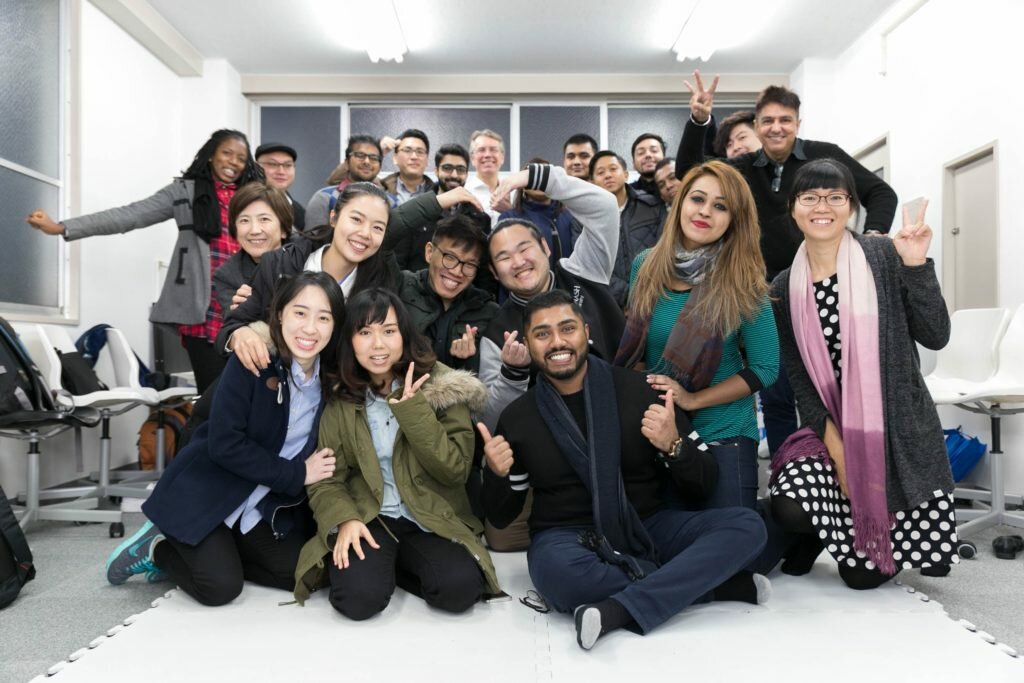

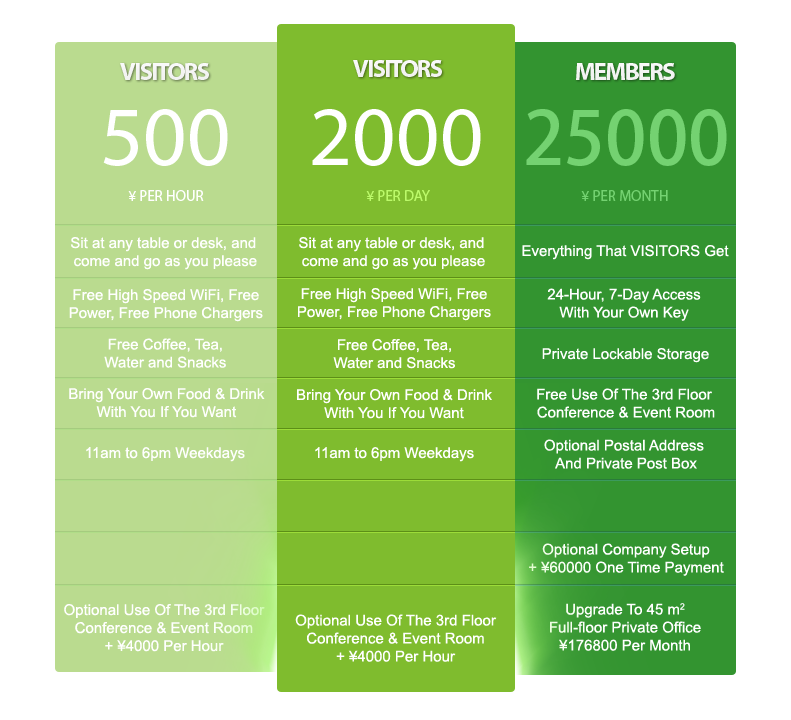

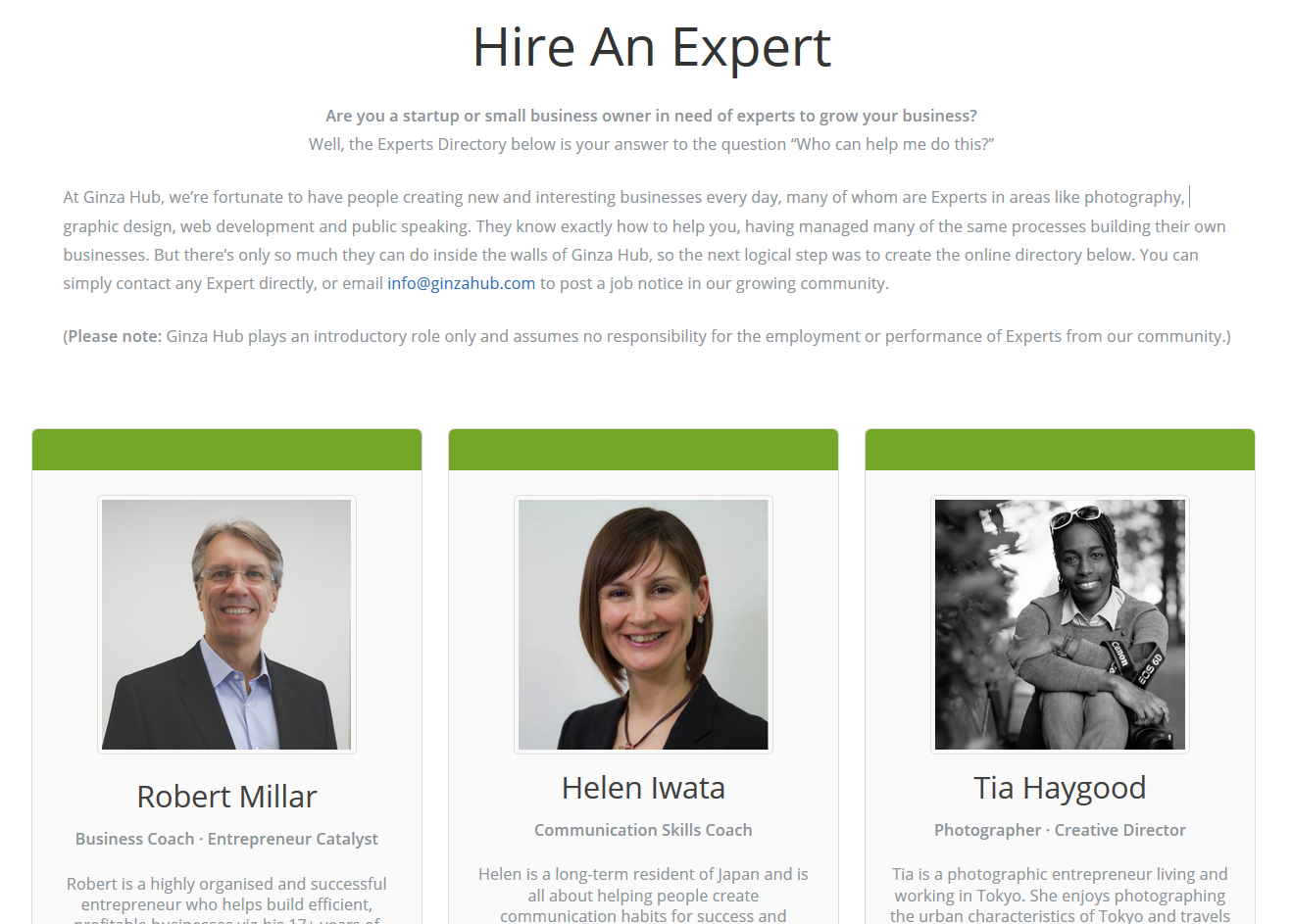
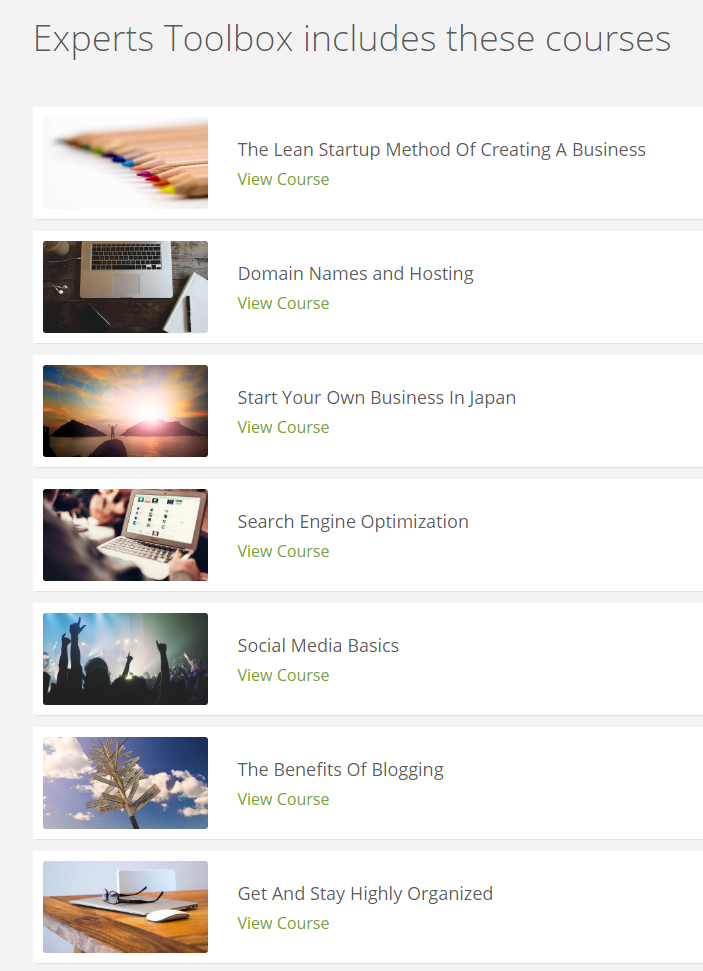



 Last weekend I had the pleasure of visiting the The Tokyo Coffee Festival at the Farmers’ Market on the grounds of the United Nations University in Shibuya. My mission was to find, sample and buy some great coffee for my members and visitors at
Last weekend I had the pleasure of visiting the The Tokyo Coffee Festival at the Farmers’ Market on the grounds of the United Nations University in Shibuya. My mission was to find, sample and buy some great coffee for my members and visitors at  But I am a certified barista and I am Australian and I do love real coffee (not that swill they serve at fast food outlets) so it was definitely worth my while.
But I am a certified barista and I am Australian and I do love real coffee (not that swill they serve at fast food outlets) so it was definitely worth my while. But the coffee itself just seemed a bit… weak, and I knew that some of my die-hard double-shot espresso loving members at Ginza Hub wouldn’t really be impressed, so I moved on…
But the coffee itself just seemed a bit… weak, and I knew that some of my die-hard double-shot espresso loving members at Ginza Hub wouldn’t really be impressed, so I moved on… So I asked them to hit me up with a sample of their best beans and bam! Found one! The beans were from Brazil, and created a strong but not overpowering taste that I really liked.
So I asked them to hit me up with a sample of their best beans and bam! Found one! The beans were from Brazil, and created a strong but not overpowering taste that I really liked.
 I then stumbled upon Single Origin Roasters from Sydney!
I then stumbled upon Single Origin Roasters from Sydney! I was equally impressed with the packaging which clearly spelled out the taste qualities and the roasting details in both English and Japanese and proclaimed, “Hands down, this is the most delicious Sumatran coffee we’ve ever tasted… Teamed with a unique drying method & expert processing, this coffee is the goods all the way!”
I was equally impressed with the packaging which clearly spelled out the taste qualities and the roasting details in both English and Japanese and proclaimed, “Hands down, this is the most delicious Sumatran coffee we’ve ever tasted… Teamed with a unique drying method & expert processing, this coffee is the goods all the way!” Near the Australian coffee stall I just visited was another cool one with this groovy looking bald Japanese dude in a purple bandanna and beard. So I thought ok, let’s give him shot (no pun intended) at the title.
Near the Australian coffee stall I just visited was another cool one with this groovy looking bald Japanese dude in a purple bandanna and beard. So I thought ok, let’s give him shot (no pun intended) at the title. Back at Ginza Hub the following week, I set up each of our two Italian espresso machines with different beans and asked our members to rate each type of coffee on a scale of 1 to 5 stars, with 5 stars being awesome.
Back at Ginza Hub the following week, I set up each of our two Italian espresso machines with different beans and asked our members to rate each type of coffee on a scale of 1 to 5 stars, with 5 stars being awesome. In my role as a business consultant, I see this sort of thing all the time – An entrepreneur needs a new website, or a re-vamp of an old website, and so hires a web designer to create one.
In my role as a business consultant, I see this sort of thing all the time – An entrepreneur needs a new website, or a re-vamp of an old website, and so hires a web designer to create one.

 I’m now a startup mentor at the University Of New South Wales’ Innovation Dojo, a program in Sydney that prepares Australians to start up a business in Japan.
I’m now a startup mentor at the University Of New South Wales’ Innovation Dojo, a program in Sydney that prepares Australians to start up a business in Japan. Ok, this would have to be my best productivity hack ever. Yes, ever.
Ok, this would have to be my best productivity hack ever. Yes, ever.


 I recently had the pleasure of interviewing Helen Iwata of Sasuga! Communications for this blog. Helen is our first ever monthly member at Ginza Hub, joining almost 2 years ago in August 2014, and she recently published a book in Japanese called (Eigo no Shigotojutsu.) Over a cup of coffee, I asked Helen a few questions about her success as an entrepreneur, while Tia Haygood of
I recently had the pleasure of interviewing Helen Iwata of Sasuga! Communications for this blog. Helen is our first ever monthly member at Ginza Hub, joining almost 2 years ago in August 2014, and she recently published a book in Japanese called (Eigo no Shigotojutsu.) Over a cup of coffee, I asked Helen a few questions about her success as an entrepreneur, while Tia Haygood of 

